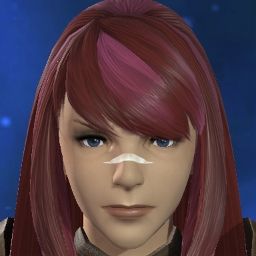The eyes in the background of the phase 2 arena in P12S are the same eyes on the side of the shadowkeeper boss in E10.
In the quest before the E10 fight, the one who recreates the E10 boss is Mitron, so it comes from his memory of Cylva fighting the First's WoL.
Cylva says during the quest "Shadow walk with me" that her soul is stained with the blackest sin, a choice of words that are very like Ultima.
Did Cylva capture a primal similar to the shadowkeeper using an auracite/memoria? Thus staining her soul?
Also, we know from the information given to us by Unukalhai that auracites were given to the champions of the 13th to capture eidolons, but they were intentionally flawed to bleed out aether, corrupt and ultimately transform its users.
From the quest "the fate of stars", Unukalhai's first time mentioning them, he uses the word "auracite".
The word auracite stems from Athena, as we learn from Lahabrea during the Pandaemonium questline.
It was Athena who dubbed it auracite after her research. So we can assume that all knowledge of the word auracite stems from Ascians who had worked with Athena, namely Lahabrea.
We can therefore assume that they got the auracites from the Ascians on the Thirteenth, and that they stemmed from Ultima.
Another evidence about Ultima being behind the curtains is when Elidibus corrected Lahabrea when Lahabrea refers to his own will and not Zodiark's, showing that he indeed is possessed by Ultima after holding the Heart of Sabik for a veery long time.
We can also find similarities between how the Lucavi were possessed and transformed and how people were enthralled and transformed via primals.
It was said that the Ascian method for summoning primals was corrupted, giving all primals a desire to harness as many worshippers as possible.
When people summoned gods in Dalmasca using the auracite given from Ultima, people would have their strongest desire amplified as Ultima would absorb their aether, transform it and transfer the aether back, transforming the user into a Lucavi.
People who had been enthralled by a primal would have their soul aspected with the primals element, gaining an affinity, but also have their aether become stagnant.
Being enthralled over a prolonged time would in the end transform the enthralled.
In both cases, the afflicted are hooked and unable to escape, they gain power, the one who enthralls gain lifeforce, they end up transformed.
We have definitively not seen the last of Ultima, especially since he/she keeps coming back.
Also, considering Ultima's story in FFXVI and the timing with P12S release.
Also the latest MSQ development that the elder god, Zeromus is attempting to break through to the source...
Suddenly other scions of darkness from FFXII could exist.
Is Ultima actually behind everything? From Zodiark and behind the creation of the Ascians desire for a perfect world?

Thread: Ultima behind everything?
-
07-19-2023 12:56 AM #1Player
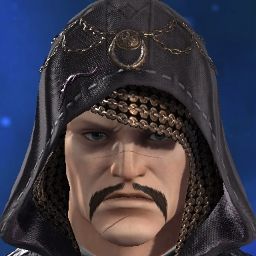
- Join Date
- Jun 2022
- Posts
- 52
- Character
- Tetsujin Yamamoto
- World
- Ragnarok
- Main Class
- Samurai Lv 100
Ultima behind everything?
(0)Last edited by Tetsujin13; 07-19-2023 at 03:57 AM.
-
07-19-2023 04:49 AM #2Player
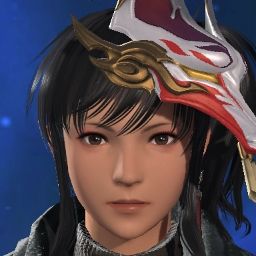
- Join Date
- Aug 2011
- Location
- Limsa Lominsa
- Posts
- 2,212
- Character
- Midi Ajihri
- World
- Hyperion
- Main Class
- Arcanist Lv 100
I’m going to go out and say that it’s probably not that deep and that Cylva never actually turned into a wolf monster just like Thancred never turned into a snake angel thing (taken from Ryne’s memory).
Otherwise I’m not exactly sure if the connection between the 13th’s auracite and Ultima’s has been made in other languages or if they just took a FF term and applied it without thinking about a connection.(1)
-
07-19-2023 08:18 AM #3Player

- Join Date
- Jul 2023
- Location
- Windurst
- Posts
- 1,135
- Character
- Lilimo Limomo
- World
- Siren
- Main Class
- Black Mage Lv 100
I love a good post that tugs at connections, and plenty of the connections you've made are solid. It does seem clear that generally speaking, there's a connection between Ultima and Auracite.
From what I remember of all of these quests and stories, Ultima was the source of most (but not all) Auracite. However, I think it's an assumption to presume that anyone in contact with Auracite is going to end up transformed, consumed, controlled, etc. Different kinds of Auracite have been shown to interact with their hosts in different ways; for example, in the Ivalice quests transformation via Auracite (whether intentional or accidental) happens extremely fast when the circumstances are right, but at the same time Tia's Auracite necklace shows that it's possible to be in possession of Auracite for decades without experiencing ill effects. In addition, the original Ramza and his buds were able to use Auracite in a heroic fight against Ultima. The eidelon-containing Auracite used in the Contramemoria only eventually lead to their users transforming into aether-starved beasts, suggesting that it takes a good deal of time for the change to occur.
In addition, it's likely that the Unsundered experienced Auracite in different ways due to the density of their aether. While Athena seems to have been somehow affected by The Heart of Sabik, I think it would be a leap to suggest that Lahabrea was without more explicit evidence.
When Cylva says her soul is stained, Occam's Razor suggests that she's just being poetic. In fact, I don't believe we're ever presented with any lore that states that souls are changed by Auracite. The game presents a lot of metaphysics about how souls work but I don't recall anything like that being among it.
I also think that the connection between the eyes is reaching; my take is that there are very few ways to draw creepy, minimalist eyes, and that's what they have in common. Especially since Cylva never really transformed into anything.
This last part is just my opinion, but I would caution against scrutinizing a lot of the content happening around ARR. It seems clear to me that the devs didn't have the Ascian story fleshed out until a handful of expansions had passed, which is why in ARR they're all talking about the power of "chaos" which is eventually entirely dropped once they decided to make Ascians more than moustache-twirling villains. The content is certainly still there if you want to explore its practical ramifications on the rest of the world for funsies, but later writing has retconned a lot of that stuff.(1)Last edited by LilimoLimomo; 07-19-2023 at 09:26 AM.
-
07-19-2023 09:40 AM #4Player
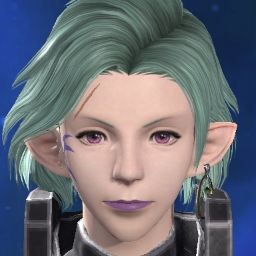
- Join Date
- Sep 2021
- Location
- Solution Eight (it's not as good)
- Posts
- 3,003
- Character
- Ein Dose
- World
- Mateus
- Main Class
- Alchemist Lv 100
God, I hope Ultima's not behind everything. Or much of anything.
Partly because we already killed Ultima so it'd feel like a bit of an anticlimax, but also because I'm pretty tired of Secret Magical Forces orchestrating everything. I already feel like there's several plot threads in the game that are devalued by 'the Ascians did it' (Garlemald most of all), part of what excites me about the game going forward is the notion that we'll be seeing machinations of people's own volition, rather than by the whims of shadowy ghost wizards. Replacing them with a shadowy rock alien really doesn't help! Let villains be villains by their own hand!
(Also I feel like there's a much clearer link between the Shadowhunter, a creature basically invented by an Ascian, and the eyes in the background of a fight against an Ancient, than 'what if space rocks were secretly involved in the former and there were literally no clues beyond kinda similar minor symbology'.)(6)
-
07-19-2023 11:08 AM #5Player

- Join Date
- Nov 2017
- Posts
- 14,102
- Character
- Aurelie Moonsong
- World
- Bismarck
- Main Class
- Summoner Lv 90
Those aren't equivalent things though. The Shadowkeeper wolf is supposedly Mitron's recollection of the fight between Ardbert and Cylva – a real historical event. The Fatebreaker, on the other hand, is explicitly an amalgamation of things from Ryne's memories – not just Thancred but also Ran'jit and apparently the sin eaters as well.
And there is precedent in the game for people actually transforming into wolves, and a connection between wolves, wargs and the Shadowkeeper.
FATE "A Beast Among Men", where you fight a Fenrir-type wolf:
FATE "Cry Not Wolf":Once upon a time, Lugarhoo traded obedience to the Shadowkeeper for the power to rend his foes with tooth and claw. Now freed from that pact, it may appear that little remains of the elf he once was─but, in truth, the thirst for violence was always at the heart of him.
It's possible that showing the Shadowkeeper herself as a wolf is creative licence, but also quite possible to be a form she actually took.Though the wargs born to serve the Shadowkeeper's fell purpose have long since cast off the chains of that fate, they resent what remains of mankind quite as much as did their erstwhile master, and are eyeing the Forest of the Lost Shepherd as a venue to vent their ire.(4)
-
07-19-2023 12:28 PM #6Player
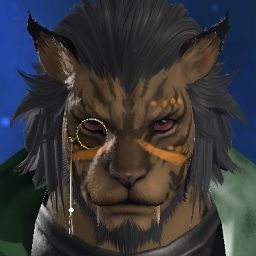
- Join Date
- Sep 2013
- Location
- The Hermit's Hovel
- Posts
- 3,698
- Character
- Trpimir Ratyasch
- World
- Lamia
- Main Class
- Gunbreaker Lv 100
Just gonna put this out here:
Correlation does not imply causation.
XIV Zeromus isn't a reference to Ivalice, it's a reference to IV... the fact post-Endwalker's story has been nothing but a big reference to IV should have made that pretty clear. In fact the Ivalice Zeromus is also a reference to IV.(4)Last edited by Cilia; 07-19-2023 at 12:32 PM.
Trpimir Ratyasch's Way Status (7.3 - End)
[ ]LOST [ ]NOT LOST [X]TRAUNT!
"There is no hope in stubbornly clinging to the past. It is our duty to face the future and march onward, not retreat inward." -Sovetsky Soyuz, Azur Lane: Snowrealm Peregrination
-
07-19-2023 03:15 PM #7Player

- Join Date
- Aug 2011
- Location
- Limsa Lominsa
- Posts
- 2,212
- Character
- Midi Ajihri
- World
- Hyperion
- Main Class
- Arcanist Lv 100
We see both the beginning and the end of the fight between Ardbert and Cylva and both times she's wearing armor and wielding a sword with no hint in either cutscene that she physically transformed.
It's certainly possible she may have without it being mentioned, but it makes much more sense to me that Mitron's memory is twisted like everything else filtered through him in the whole raid series and the theme of her minions got applied to her as well. He doesn't even get the location completely right and where the actual fight took place from what we see in the Echo doesn't look like the E10 arena.(1)
-
07-19-2023 04:48 PM #8Player

- Join Date
- Jul 2015
- Location
- Meracydia
- Posts
- 3,883
- Character
- Lythia Norvaine
- World
- Gilgamesh
- Main Class
- Viper Lv 100
The E11S fight is 'Mitron Prime' utilizing Ryne's hopes and fears against her, which is why the Fatebreaker is a Thancred/Ran'jit hybrid. Mitron wanted to break her spirit, similar to how being confronted with their darkest fears made manifest broke the spirit of the Amaurotine people during the Final Days. Hence his follow-up line:
'That fragmented souls should triumph over their fears while we succumbed to ours, thereby setting our star upon a course of ruin... That inferior beings such as you should succeed while we failed! It defies all logic!'
It's a bit trickier to reach a conclusion about the E10S fight. From a practical standpoint, the role quests with Cylva are side-content that the player may not have have personally experienced yet. Having you fight the Shadowkeeper in wolf form preserves the mystery, although if you've done the quests you appreciate the reference to Cylva's sword. I'm not sure that Mitron is trying to invoke Gaia's fears here, so much as he is trying to get her to remember her former life as Loghrif.
The true events could have played out either way. Mitron and Loghrif's plan was for Ardbert to strike down the Shadowkeeper and trigger a Flood of Light. Could that happen from a conflict with a regular person? Or would they have to be darkness-aspected first, similar to our clashes with the Lightwardens? It could be a stylistic choice, or it could be that Cylva actually transformed to fight Ardbert so that she could trigger a light-aspected flood.
With regards to the thread topic, I wonder if the 'eye-symbol' is less of a reference to Ultima than it is to Athena, given the Greek symbolism involving owls ('bright-eyed'). You also see an eye in the background in the P8S fight, which is notable during the phase transition. I think we can safely expect more Lucavi references at some point in the future, but I hope that this is just a once off connection.(2)
-
07-19-2023 05:32 PM #9
-
07-27-2023 07:23 PM #10




 Reply With Quote
Reply With Quote



